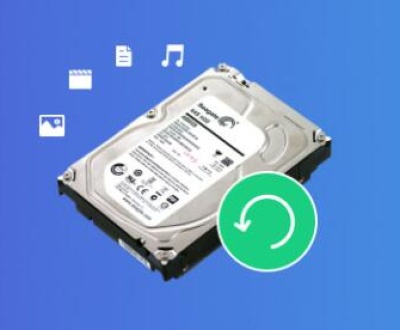Their portability and ease of use make them popular among students, professionals, and everyday users. However, the convenience of flash drives also comes with risks; data loss can occur due to accidental deletion, corruption, physical damage, or unforeseen technical issues. When such incidents happen, flash drive data recovery services can be a lifesaver.
Flash drives, also known as USB drives or thumb drives, use flash memory to store data. This memory type retains data even when the device is unplugged, making it ideal for portable storage. Flash drives come in various sizes and formats, but their small size often leads to easy misplacement or physical damage.
Common Reasons for Data Loss
Accidental Deletion: One of the most common causes of data loss. Users may mistakenly delete important files.

File System Corruption: This can occur due to improper ejection, power failures, or malware infections.
Physical Damage: Dropping or exposing the flash drive to extreme temperatures can lead to hardware failure.
Virus Attacks: Malware can corrupt files or render a flash drive unreadable.
Formatting Errors: Users may accidentally format their drives without backing up data.
Data Recovery Methods
When faced with data loss, several methods can be employed to recover lost data from a flash drive:
1. DIY Recovery Techniques
Check the Recycle Bin: Sometimes deleted files are still recoverable from the Recycle Bin.
File Recovery Software:
Panda Assistant is a cutting-edge data recovery software designed to help users effortlessly retrieve lost or deleted files from various storage devices, including USB flash drives, external hard drives, and memory cards. With a user-friendly interface, Panda Assistant makes it easy for both beginners and experienced users to navigate the recovery process.
Equipped with advanced algorithms, the software can recover a wide range of file types, from documents and photos to videos and music, ensuring that your important data is never truly lost. Whether files were accidentally deleted, corrupted, or lost due to formatting, Panda Assistant provides a reliable solution to restore them quickly.
Command Prompt: Advanced users may use Command Prompt in Windows to attempt recovery through commands like chkdsk.
Limitations: DIY methods may not be effective in all cases, especially if the data is severely corrupted or if there’s physical damage to the drive.
2. Professional Data Recovery Services
Diagnosis: The recovery process typically begins with a thorough assessment of the flash drive to determine the extent of the damage.
Data Extraction: Professionals utilize advanced tools and techniques to recover data, often involving specialized hardware and software.
File Reconstruction: In cases where files are corrupted, data recovery specialists can reconstruct files using various algorithms.
Advantages: Professional services often yield higher recovery rates, especially for severely damaged drives or complex data loss scenarios.
Choosing the Right Data Recovery Service
When selecting a data recovery service, consider the following factors:
1. Reputation and Reviews
Research customer reviews and testimonials to gauge the service’s reliability and success rates. Look for companies with a proven track record in data recovery.
2. Certifications and Experience
Choose a service with certified professionals. Industry certifications, such as those from the International Society of Forensic Computer Examiners (ISFCE), can indicate a higher level of expertise.
3. Transparency in Pricing
Reputable services provide clear pricing structures, detailing diagnostic fees, recovery costs, and potential additional charges. Avoid companies that do not disclose pricing upfront.
4. No Data, No Charge Policy
Some data recovery services operate under a “no data, no charge” policy, meaning you only pay if they successfully recover your data.
5. Turnaround Time
Depending on the severity of data loss, some services offer expedited recovery options. Ensure that the turnaround time meets your urgency requirements.
Cost of Flash Drive Data Recovery Services
The cost of recovery services can vary widely based on several factors:
Type of Damage: Simple recovery of accidentally deleted files may be inexpensive, while complex recoveries involving physical damage may be more costly.
Service Provider: Different companies have varying pricing structures. On average, basic recovery can range from $100 to $300. while complex recoveries can cost upwards of $1.000.
Urgency: If you require an expedited service, be prepared for higher fees.
Prevention Tips
To minimize the risk of data loss in the future, consider the following tips:
Regular Backups: Regularly back up data to multiple locations, including cloud storage and external hard drives.
Safe Ejection: Always use the “Safely Remove Hardware” feature before unplugging the flash drive.
Antivirus Protection: Keep antivirus software updated to protect against malware and viruses.
Physical Care: Handle flash drives carefully, avoiding exposure to extreme temperatures or moisture.
Avoid Overloading: Do not fill the drive to capacity; this can increase the risk of file corruption.
Flash drives are invaluable for storing and transferring data, but they are not immune to data loss. Understanding the causes and recovery methods available can prepare you for potential issues. While DIY solutions can be effective for minor problems, professional data recovery services offer a reliable solution for more complex scenarios. By choosing a reputable service and implementing preventative measures, you can protect your data and ensure its availability when you need it most.
About us and this blog
Panda Assistant is built on the latest data recovery algorithms, ensuring that no file is too damaged, too lost, or too corrupted to be recovered.
Request a free quote
We believe that data recovery shouldn’t be a daunting task. That’s why we’ve designed Panda Assistant to be as easy to use as it is powerful. With a few clicks, you can initiate a scan, preview recoverable files, and restore your data all within a matter of minutes.
Subscribe to our newsletter!
More from our blog
See all postsRecent Posts
- How to save tiktok videos on computer 2025-04-30
- How to watch gopro videos on computer 2025-04-30
- How to save video from blink video doorbell to computer? 2025-04-30

 Try lt Free
Try lt Free Recovery success rate of up to
Recovery success rate of up to









